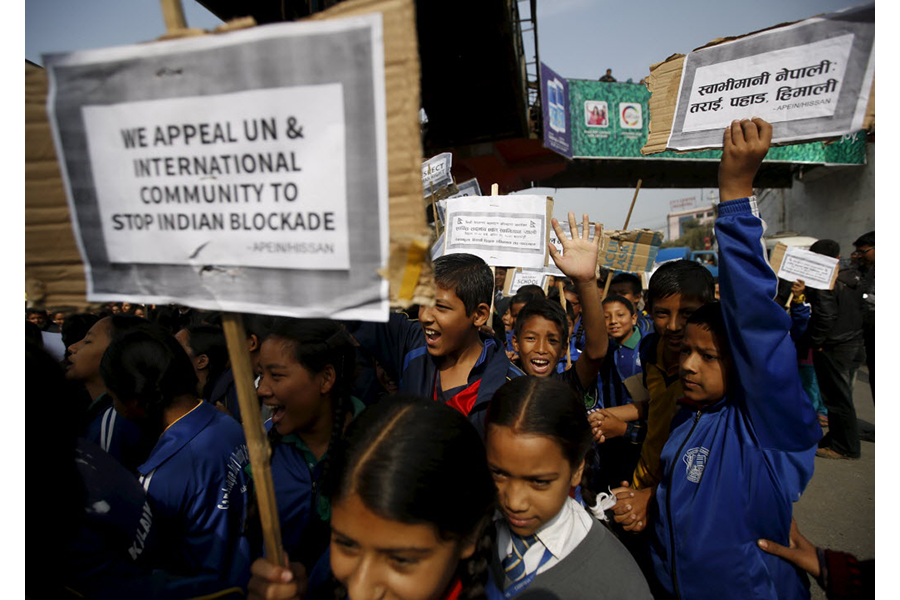Nepal faces harsh winter as blockade disrupts supply chain
It’s been a difficult year for the country of Nepal, still recovering from devastating earthquakes and now in the midst of a border blockaded by Indian border police and Nepali minority activists.
A new report by the humanitarian group Lutheran World Relief indicates the situation in Nepal might get worse before it gets better.
The organization released its 2016 Early Warning Forecast noting that more earthquakes could strike the central Asian country in the near future, while political instability caused in part by a new constitution formed in September has contributed mightily to delays in the country’s recovery efforts.
The obstruction is fueling a triumvirate of problems including an unstable economy, political issues, and a worsening humanitarian crisis.
Daniel Speckhard, the group’s CEO, said recently in an op-ed published in the Baltimore Sun that these factors have interrupted the delivery of food, aid, fuel, medicine, and construction material for shelter, particularly to the hard-hit and colder high-elevation regions of Nepal.
Two powerful earthquakes in April and May killed at least 8,000 people and wiped out 600,000 homes. But Mr. Speckhard said the government holds most of the responsibility for the pending predicament.
The Tharu and the Madhesi people, ethnic minorities in Nepal, have been staking out along the country’s southern border with India disrupting the flow of supplies. The move is in response to what they say is unfair treatment by their government. The Indian government has also been accused of blocking or slowing supplies over a dispute over Nepal's new constitution.
About 60 percent of Nepal’s medicine comes from India, along with much of its fuel. The shortages in medicines have caused some to be turned away from Nepali hospitals.
"Most vehicles have run out of gas,” Speckhard says. “Cooking fuel is scarce, forcing families to rely on environmentally unfriendly wood for fuel. And the humanitarian response to earthquake victims has nearly ground to a halt."
As many as 3 million children may also be affected, according to the United Nation’s Children’s Relief Fund, while more than 200,000 families remain housed in temporary shelters above 5,000 feet.
“The risks of hypothermia and malnutrition, and the shortfall in life-saving medicines and vaccines, could be a potentially deadly combination for children this winter," said Anthony Lake, UNICEF’s executive director, in a statement released on Monday. "During my recent visit to Nepal, I witnessed first-hand the precarious living conditions of many of the earthquake survivors. They could now be facing a new disaster – without adequate food, protection from the cold, or healthcare.”
Lutheran World Relief says the recovery will be slow in coming, but the group is pressing the United States government to increase debt relief and funding for infrastructure over three years through passage of the Nepal Recovery Act, still locked in the US Senate.
The group says another crucial element is the need for the Nepalese and Indian governments to mend relations and increase the amount of supplies getting through.
"The humanitarian organizations in Nepal are facing a race against time to ensure delivery of urgently required supplies such as food and shelter materials to these high altitude areas that will soon be cut off with the onset of winter," said Karin Hulshof, a representative of UNICEF in Nepal. "Only a small time window remains before the available land access trails become closed in the coming weeks."





